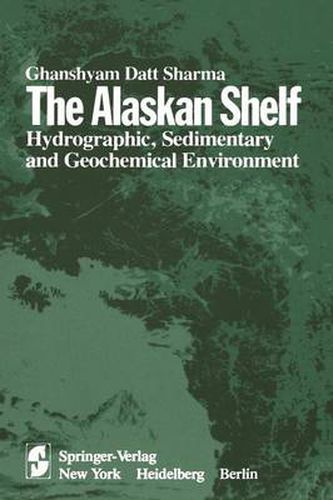Readings Newsletter
Become a Readings Member to make your shopping experience even easier.
Sign in or sign up for free!
You’re not far away from qualifying for FREE standard shipping within Australia
You’ve qualified for FREE standard shipping within Australia
The cart is loading…






This title is printed to order. This book may have been self-published. If so, we cannot guarantee the quality of the content. In the main most books will have gone through the editing process however some may not. We therefore suggest that you be aware of this before ordering this book. If in doubt check either the author or publisher’s details as we are unable to accept any returns unless they are faulty. Please contact us if you have any questions.
From a general point of view the importance of striving to minimize envir- mental disturbances on the continental shelf cannot be overemphasized. Coastal areas are sites of population centers, navigation and recreation activities, and - source development, all of which contribute to environmental stress on the shelf. Proper management of the shelf for optimum use requires a thorough understanding of shelf processes. Complex problems, such as the influence of hydrodynamics on sediment dispersal, element differentiation and migration, physiochemical changes at the sediment water interface, the relationship - tween the pollutants and sediments, and the type of substrate with regard to benthic community and/or man-made structures require a multidisciplinary approach to their solution. The present study interrelates meteorologic, hyd- graphic, sedimentologic, and geochemical parameters to derme specific envir- ments on the Alaskan Shelf. These observations are then related to geologic principles in an effort to elucidate the sedimentary processes and elemental migration on the shelf. Attempts have also been made to relate the sediment texture to the geochem- try of the sediments. Obviously the chemistry is complicated as a result of b- genic contributions and variable provenance; however, to some extent elemental differentiation accompanies textural differentiation in sediments. The distribution of elements in various phases of crustal (source) rocks is gen- ally interpreted on the basis of crystallographic concepts, especially the concept of isomorphism.
$9.00 standard shipping within Australia
FREE standard shipping within Australia for orders over $100.00
Express & International shipping calculated at checkout
This title is printed to order. This book may have been self-published. If so, we cannot guarantee the quality of the content. In the main most books will have gone through the editing process however some may not. We therefore suggest that you be aware of this before ordering this book. If in doubt check either the author or publisher’s details as we are unable to accept any returns unless they are faulty. Please contact us if you have any questions.
From a general point of view the importance of striving to minimize envir- mental disturbances on the continental shelf cannot be overemphasized. Coastal areas are sites of population centers, navigation and recreation activities, and - source development, all of which contribute to environmental stress on the shelf. Proper management of the shelf for optimum use requires a thorough understanding of shelf processes. Complex problems, such as the influence of hydrodynamics on sediment dispersal, element differentiation and migration, physiochemical changes at the sediment water interface, the relationship - tween the pollutants and sediments, and the type of substrate with regard to benthic community and/or man-made structures require a multidisciplinary approach to their solution. The present study interrelates meteorologic, hyd- graphic, sedimentologic, and geochemical parameters to derme specific envir- ments on the Alaskan Shelf. These observations are then related to geologic principles in an effort to elucidate the sedimentary processes and elemental migration on the shelf. Attempts have also been made to relate the sediment texture to the geochem- try of the sediments. Obviously the chemistry is complicated as a result of b- genic contributions and variable provenance; however, to some extent elemental differentiation accompanies textural differentiation in sediments. The distribution of elements in various phases of crustal (source) rocks is gen- ally interpreted on the basis of crystallographic concepts, especially the concept of isomorphism.